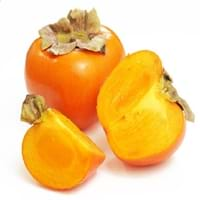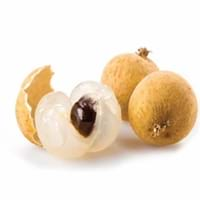Health Benefits
Anti-oxidant properties, Beneficial in curing fever, Cancer prevention, Heart care, Reduces nervous tension
Anti depressant, Anti-inflammatory properties, Healthy mucus membrane, prevents oral cavity cancer, Prevents anemia, Prevents cases of morning sickness, Prevents lung cancer, Skin rejuvenation, Treatment of colonic diseases
General Benefits
Anti-inflammatory properties, Boosts immune system, Controls blood pressure, Digestive aid, Eye care, Fights against infections, Helps in weight loss, Improves blood circulation
Anti oxidant properties, Anti-inflammatory properties, Digestive aid, Gives you energy, Suppresses Arthritis
Skin Benefits
Anti-aging benefits, Brightens and lightens complexion, Reduces wrinkles
Reduces wrinkles, Skin rejuvenation
Hair Benefits
Good conditioner, Promotes longer and healthier hair, Treatment of dandruff
Not Available
Allergy Symptoms
Abdominal pains, Anaphylaxis, Inflammation
Itching, Swelling of mouth, tongue or lips, Tingling sensation in mouth
Side Effects
Affects blood glucose levels, Decrease in blood sugar levels, Coagulation
Mouth irritation, Weight gain
Best Time to Eat
Along with meal, As a snack in the late afternoon, Don't consume at night and before bed, Eat the fresh ones, avoid mixing with any other foods, don't eat after meal.
As a snack in the late afternoon
Vitamin A (Retinol)
Not Available
Vitamin B1 (Thiamin)
Not Available
Vitamin B2 (Riboflavin)
Not Available
Vitamin B3 (Niacin)
Not Available
Vitamin B5 (Pantothenic Acid)
Not Available
Vitamin B6 (Pyridoxin)
Not Available
Vitamin B9 (Folic acid)
Not Available
Vitamin C (Ascorbic Acid)
Calories in Fresh Fruit with Peel
Calories in Fresh Fruit without Peel
Not Available
Not Available
Calories in Frozen Form
Not Available
Not Available
Calories in Dried Form
Not Available
Calories in Canned Form
Not Available
Not Available
Calories in Jam
Not Available
Type
Berry, Tree fruit
Tree fruit, Tropical
Season
Autumn, Winter
Mid to late summer
Varieties
Early Golden, John Rick, Miller, Woolbright and Ennis
Chompoo Longan, Kohala Seedling, Haew, Edau and Biew Kiew
Seedless Variety
Yes
Not Available
Color
Orange, Red, Yellow
Rusty brown
Inside Color
Yellow
Yellowish brown
Origin
Eastern United States
Mexico
Soil Type
Sandy loam, Well-drained
Well-drained
Climatic Conditions
Can tolerate wide range of climates, Sunny
Sunny, Warm, Without frosts
Facts about
- It is said that formation of seeds inside the persimmon fruit shows what type of winter is coming(type of snow).
- There are about 2000 varieties of this fruit.
- The American persimmon has another name 'Possumwood'.
- Longan is also called as "Dragon's eye" in China as it gives an impression of an eyeball.
- Longan seeds can be used to absorb the venom after the snake bite and they also help to stop bleeding.
Top Producer
China
Thailand
Other Countries
Azerbaijan, Brazil, Costa Rica, Japan, Korea, Pakistan
Australia, Combodia, Taiwan, United States of America, Vietnam
Top Importer
United States of America
China
Top Exporter
United States of America
Thailand
Botanical Name
Diospyros virginiana
Dimocarpus longan
Synonym
Not Available
Dragon eye
Subkingdom
Tracheobionta
Viridiplantae
Division
Magnoliophyta
Tracheophyta
Class
Magnoliopsida
Magnoliopsida
Subclass
Dillenhidae
Rosidae
Order
Ericales
Sapindales
Family
Ebenaceae
Sapindaceae
Genus
Diospyros
Dimocarpus
Species
D. virginiana
D. longan
Generic Group
Not Available
Not Available
Difference Between American Persimmon and Longan
We might think that American Persimmon and Longan are similar with respect to nutritional value and health benefits. But the nutrient content of both fruits is different. American Persimmon and Longan Facts such as their taste, shape, color, and size are also distinct. The difference between American Persimmon and Longan is explained here.
The amount of calories in 100 gm of fresh American Persimmon and Longan with peel is 127.00 kcal and 83.00 kcal and the amount of calories without peel is Not Available and Not Available respectively. Thus, American Persimmon and Longan belong to and category.These fruits might or might not differ with respect to their scientific classification. The order of American Persimmon and Longan is Ericales and Sapindales respectively. American Persimmon belongs to Ebenaceae family and Longan belongs to Sapindaceae family. American Persimmon belongs to Diospyros genus of D. virginiana species and Longan belongs to Dimocarpus genus of D. longan species. Beings plants, both fruits belong to Plantae Kingdom.









